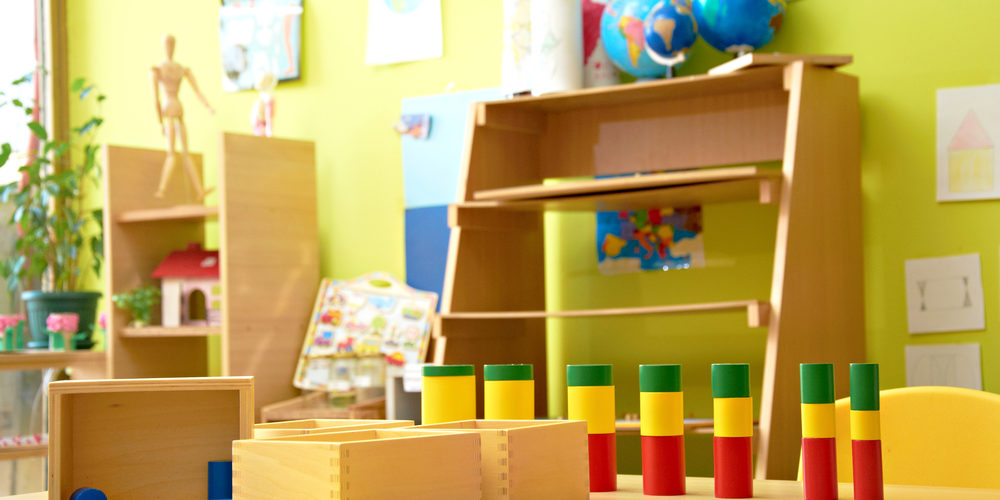Are you looking to incorporate Montessori principles at home? You might be wondering if this is possible with preschoolers. Teachers at any Montessori school in Philadelphia have received special training and degrees to create a harmonious classroom. Can you truly get the same result? You can! There are several core concepts of the Montessori method that can be done at home, starting today.
Here are six ways you can begin parenting preschoolers the Montessori way.
1. Respect Your Child
Many people will look down on children because of their immaturity or naive way of seeing the world, but that’s really more reason to show children respect. Children, particularly preschoolers, strive to feel loved and respected by their parents. When you give them that respect, acknowledge their opinions, and validate their emotions, you are teaching them how to respect themselves and others too.
One example of this at home would be when your child is trying to get your attention while you’re on a Zoom call. Patiently tell them that you are busy and you will be with them in a moment. Don’t ignore them. Once you have finished with your call, turn to your child and say, “Thank you for waiting quietly. What do you need help with?” This shows respect for their needs and also gratitude for their good behavior.
2. Allow For Freedom and Independence
Fishtown Montessori school is going to have classrooms set up that give children a sense of freedom and capability, where they can hang their own coats, easily reach the sink to wash their hands, and shelves where they can store their belongings.
At the same time, give your child a choice. When you are dealing with toddlers who want a sense of control, you can limit those power struggles by offering two choices. For example, you can ask your preschooler if they want dinner now or later or which color shirt they want to wear.
3. Communication
Always talk to your children as you would anyone else. Be clear and articulate in your responses to questions. Give them the names of the objects surrounding them, so they can increase their vocabulary. Doing so gives your child a chance to listen to and model adult communication. Furthermore, allow your children to voice their opinions, ask questions, and talk about their emotions.
4. Modeling Behaviors
Do you know what causes a tantrum? Emotions that your child is having difficulty processing. Oftentimes, this can be caused by the frustration of not knowing what is expected of them or being unable to complete a task because they don’t know how. You can help your child be more calm and in control of their emotions by showing them exactly how to perform a task. For example, if you would like your preschooler to start preparing their own snacks, first show them how to pour water from a pitcher into a cup or how to spread hummus on a pita.
And if they mess up, that’s okay. Be patient with your child and avoid jumping to the rescue.
Remember, modeling correct behavior in front of your child teaches them more than just physical skills. It teachers them how to remain level-headed and respectful, even when emotions run high.
5. Involve Your Preschooler in Tasks
As a parent, it is easy to want to do things on your own out of concern for your child’s safety. But we mustn’t forget that even preschoolers want to be an included and productive member of the household. Preschoolers are fully capable of doing menial tasks around the home, such as cleaning the dishes, sweeping dirt from the floor, making their bed, and helping prepare dinner.
This is more than giving your child chores to keep them busy. It’s teaching them useful skills that they can carry with them into adulthood. Consider which responsibilities are age-appropriate then show your preschooler how it’s done (which brings us back to modeling behaviors). Your child will be much happier knowing that they are contributing something.
6. Kid-Sized Environment
The prepared environment is a critical aspect of the Montessori method. Yet, it’s not too difficult to implement at home. You want to create a space for your child that encourages them to be independent and confident in their actions. Things that they need should be within reach.
This could mean purchasing a kid-sized desk and chair for your preschooler so they can work on activities more comfortably. You can provide your child with a step stool for objects stored on shelves, and you can give them a low cupboard in the kitchen to store their kid-sized eating utensils.
Keep the items your child uses most often at eye level. Books can be kept low or in a basket. Make the environment stimulating but not overwhelming. Their choices should be limited but enough to give them an either/or option.
Wrapping Up
Montessori parenting for preschoolers involves the common approaches, such as preparing the environment and communicating clearly with your child. Not only does Montessori help you set up an organized household, but it shows you ways to love and support your preschooler so that they grow up confident and independent.






